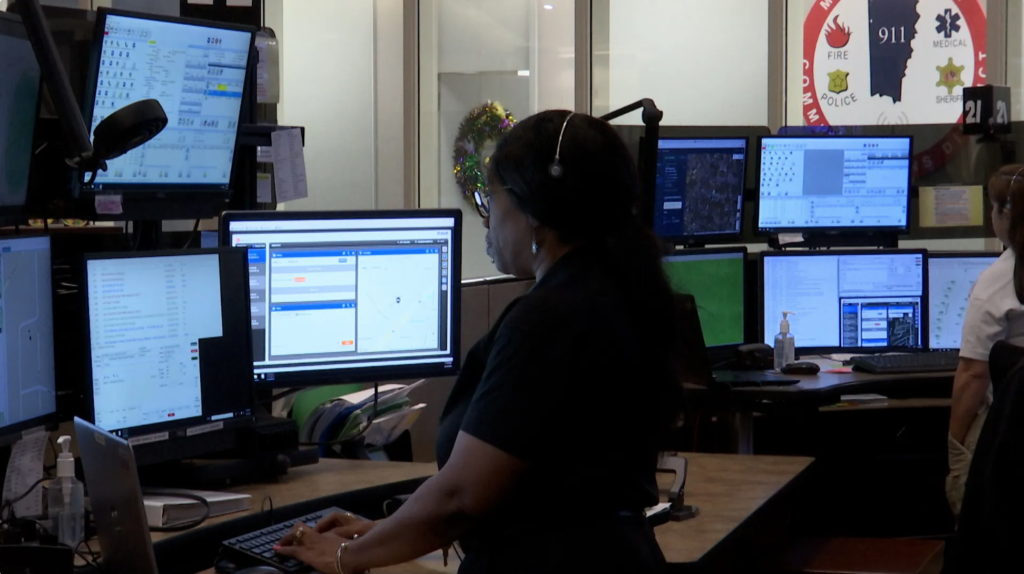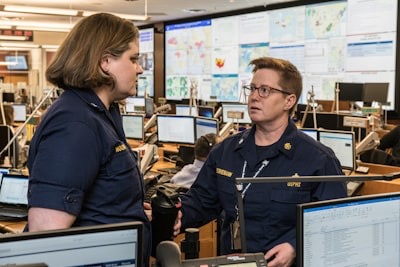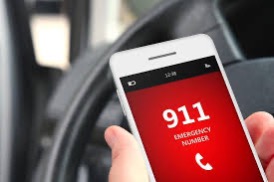Essential Guide: 911 Police Number Assistance
Master 911 Police Number Assistance: Essential Guide

Key Highlights
- The 911 system is a crucial tool for police assistance and public safety in the United States.
- The 911 system was developed in response to the need for a universal emergency number.
- The system has evolved over time, with advancements in technology improving response times and service delivery.
- Challenges faced by the 911 dispatch system include inactive or unregistered telephones and difficulties with location accuracy in cell phones.
- The future of 911 services involves integrating digital data and GPS for better service delivery and exploring new technologies for emergency response.
- Funding and regulations play a significant role in supporting and managing 911 services.
Introduction

The 911 system is a vital tool that provides immediate access to police assistance in emergency situations. It is a three-digit telephone number, widely recognized by the American public as the go-to number to call when faced with an emergency. Whether it's a crime in progress, a medical emergency, or a fire, dialing 911 ensures that help is on the way, including instructions for first aid or CPR if needed.
The concept of a universal emergency number originated in Great Britain in 1937, with the establishment of the 999 number. This prompted other countries like Belgium, Denmark, and Sweden to adopt their own emergency numbers. In the United States, the need for a single emergency number became apparent as the population grew and the existing emergency reporting methods proved inadequate. Canada also recognized the advantages of a single emergency number and chose to adopt 9-1-1, giving it international stature.
In January of 1968, the American Telephone and Telegraph Company (AT&T) announced the availability of the digits 911 as the single emergency telephone number. This announcement was prompted by the recommendations of The President's Commission on Law Enforcement and Administration of Justice and the Federal Communications Commission. The choice of the number 911 was based on ease of dialing and remembrance, as well as the ability to modify existing telephone company equipment. Since then, 911 has become a crucial tool for police assistance, with its availability expanding to new territories and technologies. For example, on September 15, 2010, AT&T announced a Text-to-911 trial in Tennessee, allowing users to send text messages to 911 PSAPs.
Since its introduction, the 911 system has become an integral part of public safety and law enforcement in the United States. It has saved countless lives and provided immediate assistance to those in need. Understanding the role and evolution of the 911 system is essential to appreciate its significance in ensuring public safety.
Understanding the Role of 911 in Police Assistance

The role of 911 in police assistance is pivotal for public safety. Originating in the United States, 911 has evolved into the standard emergency number across the nation. This system efficiently connects callers with law enforcement during emergencies, providing immediate assistance. Call centers, known as Public Safety Answering Points (PSAPs), are crucial in dispatching help promptly. Understanding the significance of 911 ensures quick response times during medical emergencies, fires, and other crises, supporting the administration of justice throughout communities.
The Origins and Evolution of the 911 System
The 911 system originated in February 1968 in the United States to provide immediate assistance in emergencies. Alabama Speaker of the House, Rankin Fite, dialed the three digits for the first time in Haleyville. Over time, this emergency number spread across the nation, as well as to other countries such as the United Kingdom. The Federal Communications Commission designated 911 as the universal emergency number. The system evolved to include enhanced features like location information to aid law enforcement and medical emergencies.
How 911 Became the Standard for Emergencies
The 911 emergency number originated in 1968 in Haleyville, Alabama. Following its success, the system spread rapidly across the United States. By 1999, 93% of the American population had access to 911 services. The Federal Communications Commission designated 911 as the universal emergency number in the US. This move ensured consistency and streamlined emergency response efforts nationwide, making 911 the go-to number for immediate assistance in times of crisis. The history of 911 can be traced back through the wayback machine, showing its evolution and impact on emergency services in the US.
Technology Behind 911 Services

911 services rely on sophisticated technology to ensure swift responses to emergencies. Enhanced 911 systems link callers to local services efficiently, while mobile phones have revolutionized emergency communication. Challenges like inactive phones and cell location accuracy persist. Modernization efforts integrate digital data and GPS for improved emergency assistance, with the implementation of Next Generation 911. Future tech advancements promise even quicker responses. This technology is vital for the efficient functioning of emergency services and ensuring public safety.
Enhanced 911 - Connecting Callers with Local Services
Enhanced 911, also known as E911, revolutionizes emergency responses by automatically providing detailed location information to dispatchers. This advanced system connects callers to local emergency services based on their precise whereabouts, significantly reducing response times in critical situations. E911 is crucial for public safety as it ensures swift and accurate assistance, especially in medical emergencies or situations requiring immediate law enforcement intervention. By seamlessly linking callers with the appropriate local responders, enhanced 911 plays a vital role in saving lives and ensuring efficient emergency services.
The Impact of Mobile Phones on 911 Efficiency

Mobile phones have revolutionized 911 efficiency by enabling faster emergency responses. With the ability to track caller locations, dispatchers can pinpoint emergencies swiftly. This advancement has been crucial, especially in medical emergencies where quick action is essential. Mobile phones also allow for text messages to 911, aiding those in situations where speaking may not be safe. Overall, the integration of mobile technology has significantly enhanced the effectiveness of 911 services.
Challenges Faced by the 911 Dispatch System
Addressing inactive or unregistered telephones is a continual challenge for 911 dispatch systems. Furthermore, ensuring accurate location information from cell phones poses difficulties in emergency situations. The need to overcome these hurdles is crucial for efficient emergency response and public safety. Integrating advanced technologies like GPS and digital data can enhance the accuracy of location tracking for faster and more precise dispatching of emergency services. These obstacles highlight the ongoing need for improvements in the 911 dispatch system.
Addressing Inactive or Unregistered Telephones
911 services face challenges when dealing with inactive or unregistered telephones, hindering swift emergency responses. Efforts to improve accuracy in locating such devices are ongoing to enhance public safety. Law enforcement agencies work towards integrating advanced technologies to address this issue efficiently, ensuring that emergency assistance reaches those in need promptly. Dispatcher training and technological advancements play a crucial role in overcoming this obstacle in the effective administration of justice.
Overcoming Difficulties with Location Accuracy in Cell Phones
Advancements in NLP have tackled challenges with location accuracy in cell phones. By leveraging caller data and GPS technology, emergency services can pinpoint precise locations for quicker response times. The integration of digital data has significantly enhanced the accuracy of identifying caller locations. These innovations address critical concerns regarding the reliability of location information from mobile phones, ensuring that emergency responders can reach individuals in need promptly.
Improving 911 Services Through Modernization
Integration of digital data and GPS has revolutionized 911 services, ensuring swifter and more accurate emergency responses. Future technologies such as AI and IoT hold promise for enhancing dispatch systems further, strengthening public safety. By leveraging modern advancements, emergency services can streamline operations and optimize resource allocation to better serve communities in times of crisis. The continuous evolution of technology, especially during Cybersecurity Awareness Month in October, propels 911 services towards a more efficient and effective future, safeguarding lives across the nation.
Integration of Digital Data and GPS for Better Service Delivery
By integrating digital data and GPS technology, 911 services have greatly enhanced their ability to provide accurate and timely assistance during emergencies. This fusion allows dispatchers to pinpoint a caller's location with precision, enabling quicker responses from law enforcement, fire departments, and medical services. The integration of these technologies has revolutionized the way emergency assistance is deployed, ensuring a more efficient and effective public safety response. Leveraging digital data and GPS not only streamlines operations but also saves crucial time in critical situations.
Future Technologies Enhancing Emergency Response
Future technologies such as AI, IoT, and Big Data are revolutionizing emergency response. AI-powered systems can analyze distress signals for pattern recognition, aiding dispatchers in swift decision-making. IoT connects devices for real-time data sharing, enhancing location accuracy for responders. Big Data processes vast information streams to predict and prevent emergencies. These advancements promise quicker and more efficient responses, ensuring public safety. The integration of such technologies marks a significant leap forward in emergency services, shaping the future of rapid assistance.
Legal and Funding Aspects of 911 Services
How 911 services are funded and managed varies across municipalities, with the Federal Communications Commission (FCC) playing a pivotal role in setting standards. Regulations and compliance are crucial aspects ensuring the effective administration of justice through emergency services. The funding mechanisms for 911 services are essential for the seamless operation of these critical public safety systems. Proper management and financial support are vital to guarantee immediate assistance when individuals dial the 911 police number.
How 911 Services are Funded and Managed
Funding for 911 services in the U.S. primarily comes from local fees on telephone services, often overseen by municipalities. The Federal Communications Commission (FCC) plays a crucial role in regulating and ensuring the efficiency of these services. Additionally, wireless carriers contribute to funding these emergency services. Management of 911 services involves coordination between various stakeholders such as law enforcement, fire departments, and emergency medical services to ensure a seamless response system for public safety.
Regulations and Compliance for Emergency Services
Emergency services in the United States are subject to strict regulations to ensure public safety. The Federal Communications Commission (FCC) oversees compliance with guidelines for 911 services, addressing aspects like call center operations, training for dispatchers, and handling of location information. These regulations aim to standardize emergency response procedures across municipalities. Additionally, specific requirements govern the administration of justice in emergency situations, reinforcing the importance of prompt and accurate assistance. Adherence to these regulations is crucial for maintaining the integrity and effectiveness of emergency services.
Conclusion
In conclusion, the 911 emergency system plays a critical role in ensuring public safety by efficiently connecting individuals in need with vital police assistance. Understanding the evolution, challenges, and advancements in 911 services is crucial for optimizing emergency response efforts. By staying informed and prepared to provide accurate information when dialing 911, we contribute to the effective functioning of this essential service. As technology evolves, so do the opportunities to enhance emergency services and improve outcomes for those in distress. Let's continue to support and prioritize the development of 911 systems to safeguard our communities in times of need.
FAQ
What Should You Do If You Accidentally Dial 911?
If you accidentally dial 911, stay on the line and explain it was a mistake. Do not hang up abruptly as it may lead to a follow-up emergency response. Cooperate with the dispatcher’s questions and provide necessary information calmly.
Can Text Messages Be Sent to 911?
Yes, text messages can be sent to 911 in some areas. This service allows individuals with hearing or speech impairments to communicate with emergency services. Check with your local authorities for availability and guidelines.
How Are Emergency Calls Prioritized?
Emergency calls are prioritized based on the severity of the situation. Life-threatening emergencies like medical crises or crimes in progress receive immediate attention, followed by urgent but non-life-threatening incidents.
What Information Should You Provide When Calling 911?
When calling 911, provide your location, nature of emergency, and any relevant details. Stay calm and follow instructions given by the dispatcher to ensure a swift response.
https://www.nena.org/page/911Statistics
https://govlab.hks.harvard.edu/alternative-911-emergency-response
https://www.911.gov/about/the-national-911-program-celebrates-50-years-of-911


